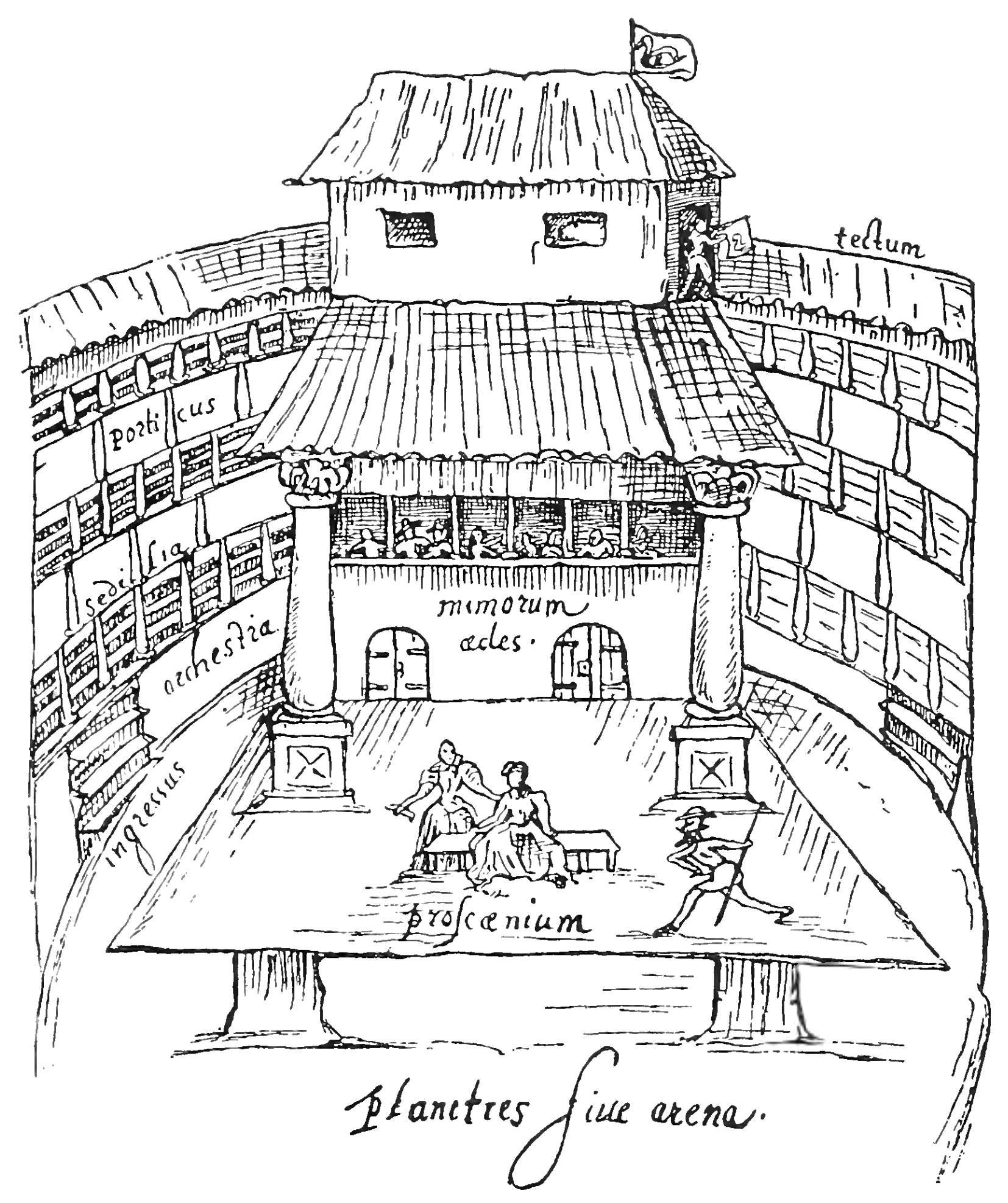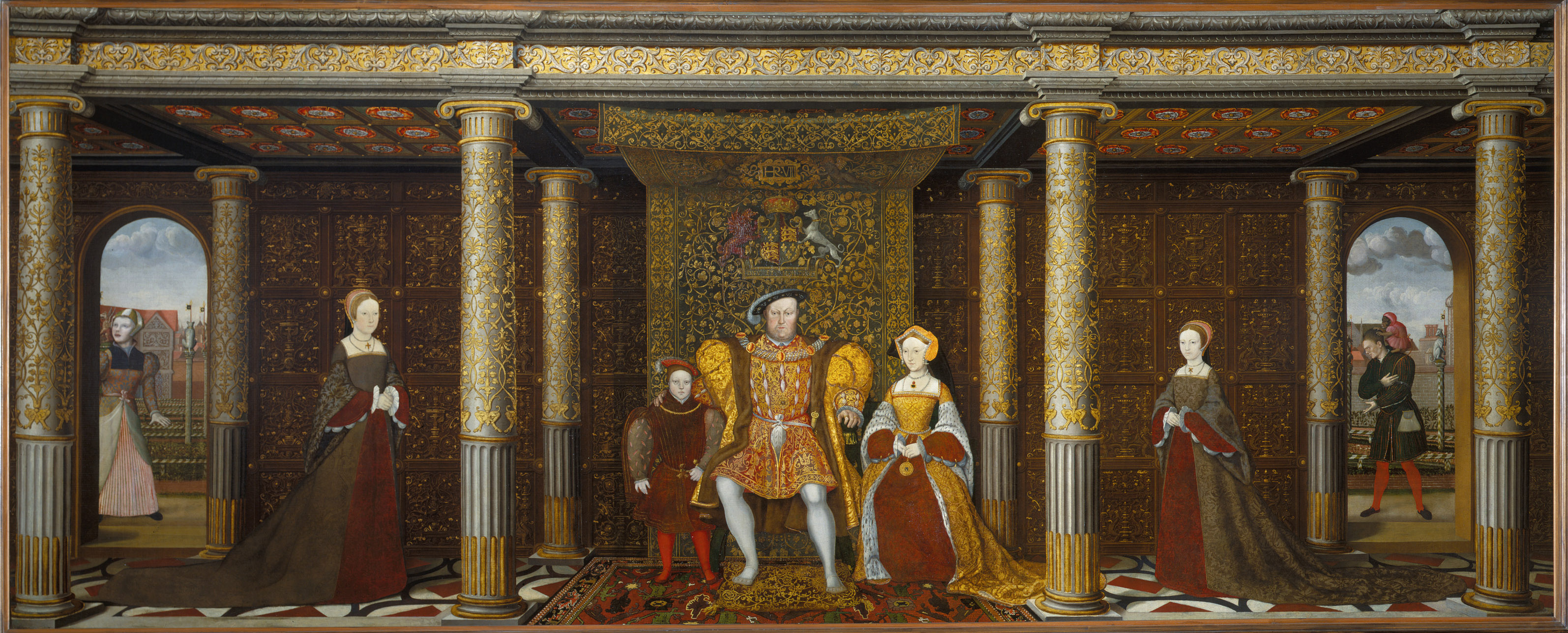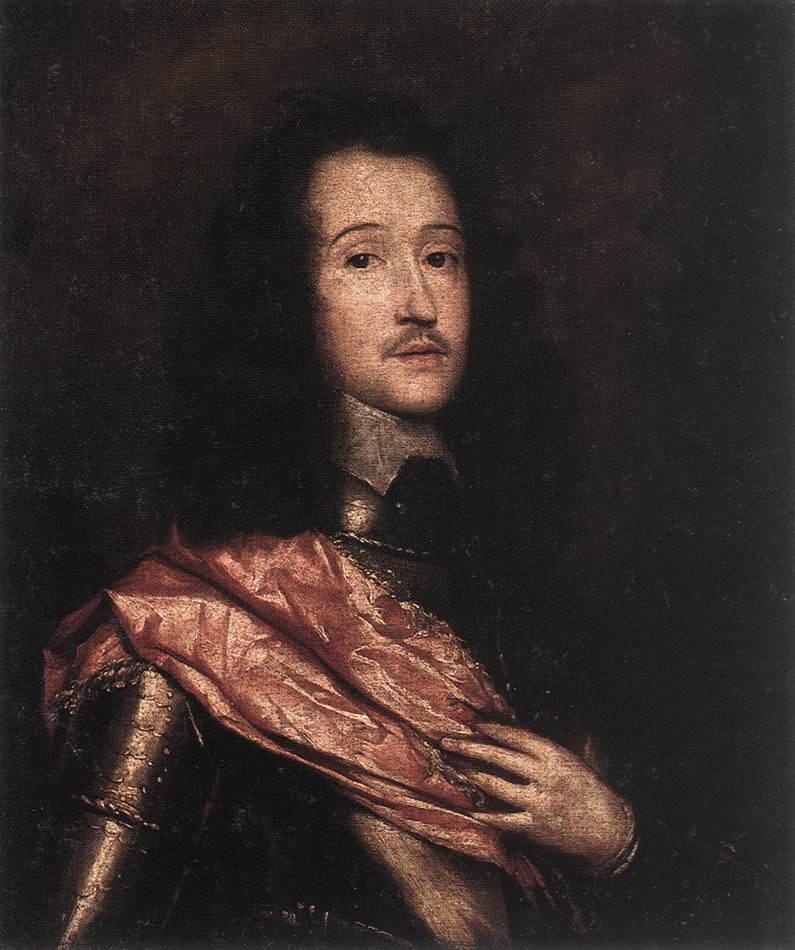|
Playing Company
In Renaissance-era London, playing company was the usual term for a company of actors. These companies were organised around a group of ten or so shareholders (or "sharers"), who performed in the plays but were also responsible for management. The sharers employed "hired men" that is, the minor actors and the workers behind the scenes. The major companies were based at specific theatres in London; the most successful of them, William Shakespeare's company the King's Men, had the open-air Globe Theatre for summer seasons and the enclosed Blackfriars Theatre in the winters. The Admiral's Men occupied the Rose Theatre in the 1590s, and the Fortune Theatre in the early 17th century. Less fortunate companies spent most of their existences touring the provinces; when Worcester's Men gained official permission to perform in London in 1602, they were, in a manner of speaking, "coming in from the cold" of a life of constant touring. Origins The development of theatre in England in ... [...More Info...] [...Related Items...] OR: [Wikipedia] [Google] [Baidu] |
English Renaissance Theatre
The English Renaissance theatre or Elizabethan theatre was the theatre of England from 1558 to 1642. Its most prominent playwrights were William Shakespeare, Christopher Marlowe and Ben Jonson. Background The term ''English Renaissance theatre'' encompasses the period between 1562—following a performance of ''Gorboduc'', the first English play using blank verse, at the Inner Temple during the Christmas season of 1561—and the ban on theatrical plays enacted by the English Parliament in 1642. In a strict sense "Elizabethan" only refers to the period of Queen Elizabeth's reign (1558–1603). ''English Renaissance theatre'' may be said to encompass ''Elizabethan theatre'' from 1562 to 1603, '' Jacobean theatre'' from 1603 to 1625, and '' Caroline theatre'' from 1625 to 1642. Along with the economics of the profession, the character of the drama changed towards the end of the period. Under Elizabeth, the drama was a unified expression as far as social class was concerned: th ... [...More Info...] [...Related Items...] OR: [Wikipedia] [Google] [Baidu] |
English Renaissance
The English Renaissance was a Cultural movement, cultural and Art movement, artistic movement in England during the late 15th, 16th and early 17th centuries. It is associated with the pan-European Renaissance that is usually regarded as beginning in Italy in the late 14th century. As in most of the rest of Northern Europe, England saw little of these developments until more than a century later within the Northern Renaissance. Renaissance style and ideas were slow to penetrate England, and the Elizabethan era in the second half of the 16th century is usually regarded as the height of the English Renaissance. Many scholars see its beginnings in the early 16th century during the reign of Henry VIII. Others argue the Renaissance was already present in England in the late 15th century. The English Renaissance is different from the Italian Renaissance in several ways. The dominant art forms of the English Renaissance were literature and music. Visual arts in the English Renaissance w ... [...More Info...] [...Related Items...] OR: [Wikipedia] [Google] [Baidu] |
Children Of Paul's
The Children of Paul's was the name of a troupe of boy actors in Elizabethan and Jacobean London. Along with the Children of the Chapel, they were an important component of the companies of boy players that constituted a distinctive feature of English Renaissance theatre. Education The youth who would become choirboys and boy players for the Children of Paul's ranged in age from six to their mid-teens. They would be educated and boarded at the choir school, trained in not only singing but in grammar and literacy. Although their basic needs were taken care of, choirboys sometimes made some money for themselves. When fashionably dressed men wearing spurs, which could be loud and distracting to other church-goers, would enter the chapel, the choirboys would sometimes demand money as a fee. This fee was called "spur money". Choirboys were allowed time to play on Thursday afternoons, and in one document from 1598, a verger named John Howe notes an occasion when the boys broke window ... [...More Info...] [...Related Items...] OR: [Wikipedia] [Google] [Baidu] |
Caroline Era
The Caroline era is the period in English and Scottish history named for the 24-year reign of Charles I of England, Charles I (1625–1649). The term is derived from ''Carolus'', Latin for Charles. The Caroline era followed the Jacobean era, the reign of Charles's father James I of England, James I & VI (1603–1625), overlapped with the English Civil War (1642–1651), and was followed by the English Interregnum until Stuart Restoration, The Restoration in 1660. It should not be confused with the Carolean era, which refers to the reign of Charles I's son Charles II of England, King Charles II. The Caroline era was dominated by growing religious, political, and social discord between the King and his supporters, termed the Royalist party, and the Roundhead, Parliamentarian opposition that evolved in response to particular aspects of Charles's rule. While the Thirty Years' War was raging in continental Europe, Britain had an uneasy peace, growing more restless as the civil conflic ... [...More Info...] [...Related Items...] OR: [Wikipedia] [Google] [Baidu] |
Jacobean Era
The Jacobean era was the period in English and Scotland, Scottish history that coincides with the reign of James VI and I, James VI of Scotland who also inherited the crown of England in 1603 as James I. The Jacobean era succeeds the Elizabethan era and precedes the Caroline era. The term "Jacobean" is often used for the distinctive styles of Jacobean architecture, visual arts, decorative arts, and English_literature#Jacobean_period_(1603%E2%80%931625), literature which characterized that period. The word "Jacobean" is derived from Neo-Latin ''Jacobaeus'' from ''Jacobus'', the Ecclesiastical Latin form of the English name James (name), James. James as King of England The practical if not formal Union of the Crowns, unification of England and Scotland under one ruler was an important shift of order for both nations, and would shape their existence to the present day. Another development of crucial significance was the foundation of the first British colonies on the North Americ ... [...More Info...] [...Related Items...] OR: [Wikipedia] [Google] [Baidu] |
Elizabethan Era
The Elizabethan era is the epoch in the Tudor period of the history of England during the reign of Queen Elizabeth I (1558–1603). Historians often depict it as the golden age in English history. The Roman symbol of Britannia (a female personification of Great Britain) was revived in 1572, and often thereafter, to mark the Elizabethan age as a renaissance that inspired national pride through classical ideals, international expansion, and naval triumph over Spain. This "golden age" represented the apogee of the English Renaissance and saw the flowering of poetry, music, and literature. The era is most famous for its theatre, as William Shakespeare and many others composed plays that broke free of England's past style of theatre. It was an age of exploration and expansion abroad, while back at home, the Protestant Reformation became more acceptable to the people, most certainly after the Spanish Armada was repelled. It was also the end of the period when England was a sep ... [...More Info...] [...Related Items...] OR: [Wikipedia] [Google] [Baidu] |
Morality Play
The morality play is a genre of medieval and early Tudor drama. The term is used by scholars of literary and dramatic history to refer to a genre of play texts from the fourteenth through sixteenth centuries that feature personified concepts (most often virtues and vices, but sometimes practices or habits) alongside angels and demons, who are engaged in a struggle to persuade a protagonist who represents a generic human character toward either good or evil. The common story arc of these plays follows "the temptation, fall and redemption of the protagonist".King, Pamela M. "Morality Plays." In ''The Cambridge Companion to Medieval English Theatre'', edited by Richard Beadle and Alan J. Fletcher. 2nd ed. Cambridge University Press, Cambridge, 2008: 235-262, at 235. English morality plays Hildegard von Bingen's '' Ordo Virtutum'' (English: "Order of the Virtues"), composed c. 1151 in Germany, is the earliest known morality play by more than a century, and it is the only medie ... [...More Info...] [...Related Items...] OR: [Wikipedia] [Google] [Baidu] |
Mystery Play
Mystery plays and miracle plays (they are distinguished as two different forms although the terms are often used interchangeably) are among the earliest formally developed plays in medieval Europe. Medieval mystery plays focused on the representation of Bible stories in churches as tableaux with accompanying antiphonal song. They told of subjects such as the Creation, Adam and Eve, the murder of Abel, and the Last Judgment. Often they were performed together in cycles which could last for days. The name derives from '' mystery'' used in its sense of ''miracle,'' but an occasionally quoted derivation is from ''ministerium'', meaning ''craft'', and so the 'mysteries' or plays performed by the craft guilds. Origins As early as the fifth century, living tableaux were introduced into sacred services. The plays originated as simple ''tropes'', verbal embellishments of liturgical texts, and slowly became more elaborate. At an early period chants from the service of the day were ... [...More Info...] [...Related Items...] OR: [Wikipedia] [Google] [Baidu] |
Medieval Theatre
Medieval theatre encompasses theatrical in the period between the fall of the Western Roman Empire in the 5th century and the beginning of the Renaissance in approximately the 15th century. The category of "medieval theatre" is vast, covering dramatic performance in Europe over a thousand-year period. A broad spectrum of genres needs to be considered, including mystery plays, morality plays, farces and masques. The themes were almost always religious. The most famous examples are the English cycle dramas, the York Mystery Plays, the Chester Mystery Plays, the Wakefield Mystery Plays, and the N-Town Plays, as well as the morality play known as '' Everyman''. One of the first surviving secular plays in English is '' The Interlude of the Student and the Girl'' (c. 1300). Due to a lack of surviving records and texts, low literacy in the general population, and the opposition of the clergy, there are few surviving sources from the Early and High Medieval periods. However, by ... [...More Info...] [...Related Items...] OR: [Wikipedia] [Google] [Baidu] |
Boy Player
A boy player was a male child or teenager who performed in Medieval theatre, Medieval and English Renaissance theatre, English Renaissance playing companies. Some boy players worked for adult companies and performed the female roles, since women were not allowed to perform on the English stage during this period. Others worked for children's companies in which all roles, not just the female ones, were played by boys. Children's companies In the Elizabethan era, Elizabethan and Jacobean era, Jacobean periods, troupes appeared that were composed entirely of boy players. They are famously mentioned in William Shakespeare, Shakespeare's ''Hamlet'', in which a group of travelling actors has left the city due to rivalry with a troupe of "little eyases" (II, ii, 339); the term "eyas" means an unfledged hawk. The children's companies grew out of the choirs of boy singers that had been connected with cathedrals and similar institutions since the Middle Ages. (Similar boy choirs exis ... [...More Info...] [...Related Items...] OR: [Wikipedia] [Google] [Baidu] |
Acrobatics
Acrobatics () is the performance of human feats of balance (ability), balance, agility, and motor coordination. Acrobatic skills are used in performing arts, sports, sporting events, and martial arts. Extensive use of acrobatic skills are most often performed in acro dance, circus, gymnastics, and freerunning and to a lesser extent in other athletic activities including ballet, slacklining and Diving (sport), diving. Although acrobatics is most commonly associated with human body performance, the term is used to describe other types of performance, such as aerobatics. History Acrobatic traditions are found in many cultures, and there is evidence that the earliest such traditions occurred thousands of years ago. For example, Minoan civilization, Minoan art from contains depictions of bull-leaping, acrobatic feats on the backs of bulls. Ancient Greeks practiced acrobatics, and the noble court displays of the European Middle Ages would often include acrobatic performances that ... [...More Info...] [...Related Items...] OR: [Wikipedia] [Google] [Baidu] |







